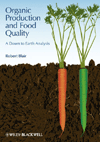The relationship between mood and eating played out big time during the pandemic, especially when it comes to snacking and treating ourselves, reports The NPD Group. With many people spending more time at home during the pandemic, snack foods and treats, both better-for-you and indulgent, help to fill voids created by sadness, boredom, stress, and other moods. For example, the average U.S. consumer ate +37 percent more snack foods and treats while feeling sad or depressed during the pandemic than they did in 2019, according to NPD’s recently released Future of Snacking report, which shows what snack food consumption in America looks like now and over the next two years.
Of all moods, being sad or depressed had the most impact on snack food and treat consumption, but boredom followed closely increasing snacking by +33 percent. In addition to being sad, depressed, or bored, consumers tended to eat more snack foods and treats when they were cranky, stressed, anxious, calm, and relaxed. Snack food consumption declined when consumers were feeling rushed, happy, good, tired, and just normal or neutral, finds NPD.
A combination of savory snack foods and treats helps to comfort consumers. Although sad or depressed consumers lean toward sweeter treats whereas bored consumers tend to reach for more savory snack foods. There is also a balance of better-for-you and indulgent snacking in most cases. At the beginning of the pandemic consumers did reach for more treats and indulgent snack foods but as the pandemic continued, they realized long-term indulgent behaviors needed to be balanced.
“Looking forward, the snack food and sweets industries need to keep a keen eye on the mental state of consumers, as changing times impact emotional needs for snack foods and treats,” says Darren Seifer, NPD food and beverage industry analyst, a contributor to the Future of Snacking study. “Today it’s about fighting boredom and boosting mental well-being. Tomorrow, look for more sharing of snack foods and treats in social environments as shared experiences come back into focus and pent-up demand for these types of occasions is released.”









